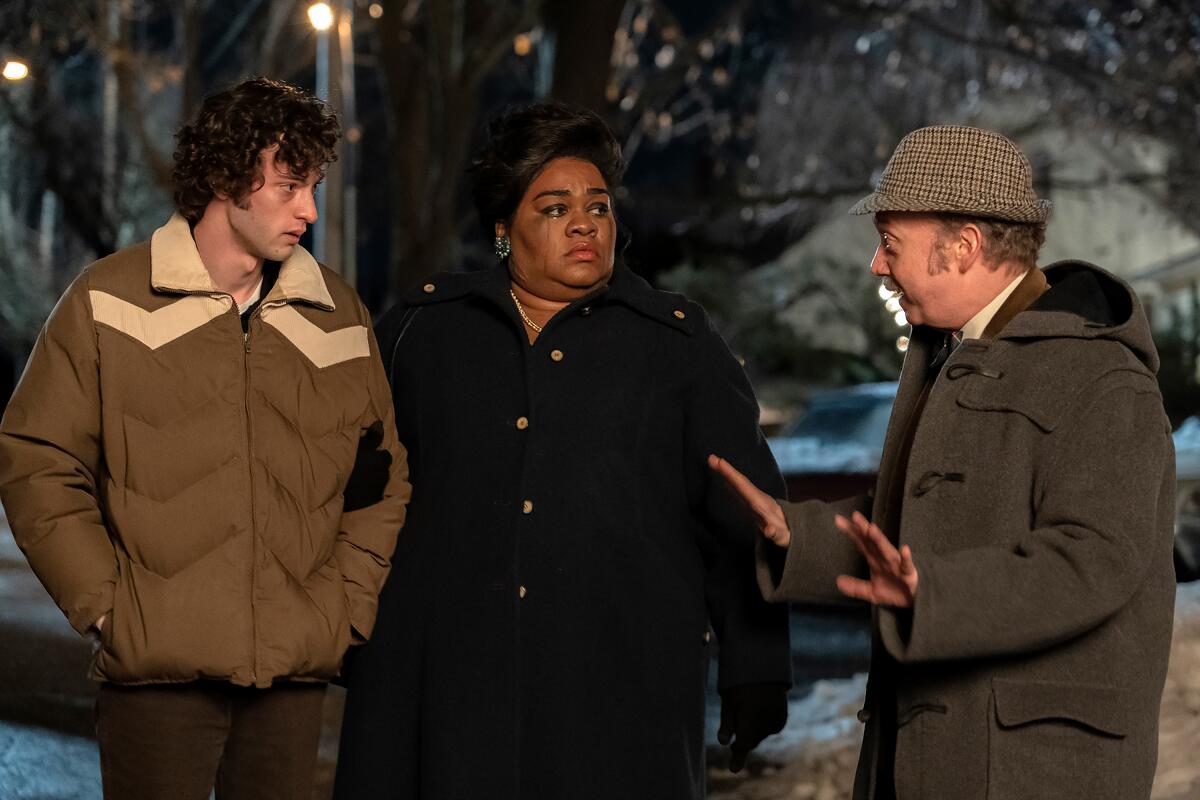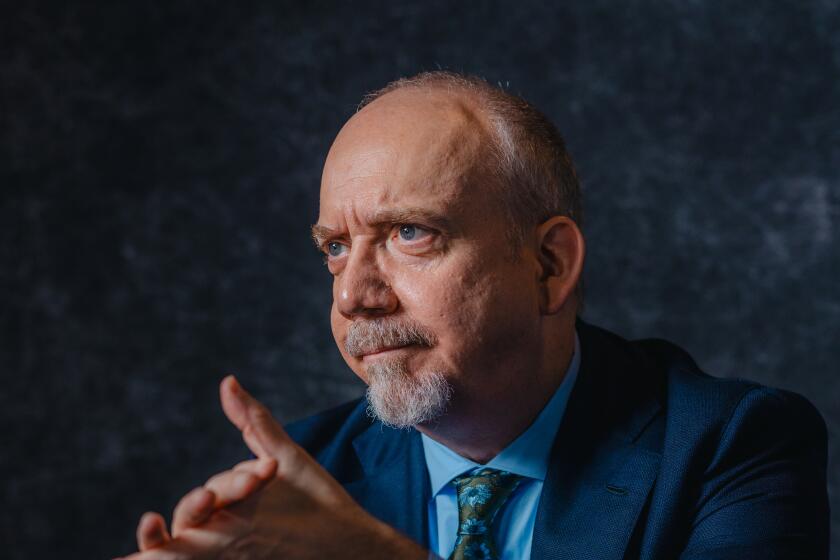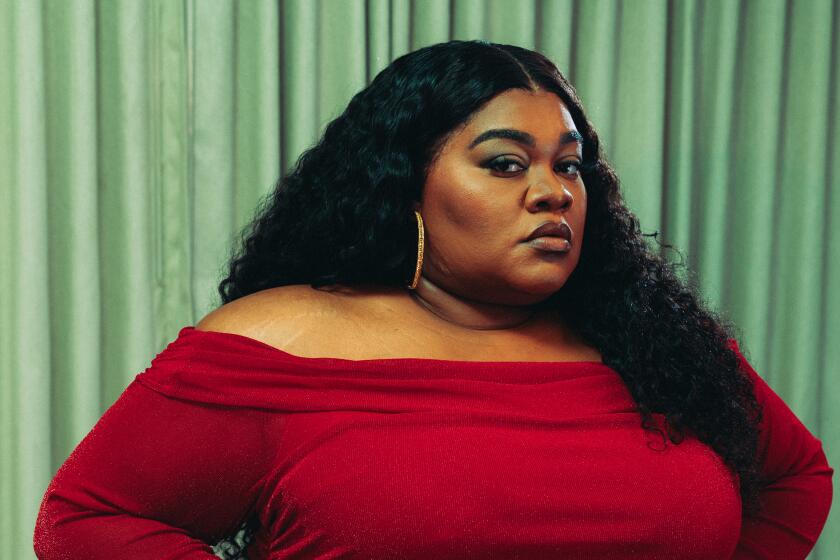The art of film editing: ‘Try things out and see what works emotionally’

- Share via
Director Alexander Payne regularly coaxes acclaimed performances from his actors. Is he a multiple-takes kind of guy? “Yeah, but not insane,” says editor Kevin Tent. “I’d say he’s a four-to-sixer.” Tent would know. He’s edited every one of Payne’s eight movies, including “Sideways,” “The Descendants” and “Nebraska.”
This year, Payne’s prep school comedy-drama, “The Holdovers,” earned five Academy Award nominations, including acting nods for Da’Vine Joy Randolph and Paul Giamatti. “Some actors don’t really warm up until take five or six,” says Oscar nominee Tent, “But in ‘The Holdovers,’ all of our actors were on fire.”
Over the decades, Tent and Payne have established a no-nonsense collaborative rhythm: Payne shoots, and Tent edits the dailies. By the time “The Holdovers” wrapped production in Massachusetts in winter 2022, Tent, working from his Los Feliz home studio, had put together a rough assembly that ran about two hours and 45 minutes. Payne took a break to recharge, then huddled with Tent for some seven months. Together, they reshuffled, tightened up and pared down the footage into a sleek but still evocative two-hour-and-13-minutes feature.
“He’s not a bad guy. I don’t think he’s wrong in a lot of what he says right off the bat to the headmaster,” the actor says of his haughty, dismissive teacher character.
“One of the harder things with Alexander’s movies is to keep them moving, only because on set, he gives his actors the time and space to do their thing,” Tent notes. “He doesn’t want to rush them. It’s our job to condense, and sometimes it’s like, ‘We’ve got to figure out how to get this baby down.’”
Tent absorbed the art and craft of the tight edit from Roger Corman. A Buffalo native, Tent moved west to attend Los Angeles City College, where he cut his own short films. He then worked on such exploitation flicks as “Frankenhooker” before experiencing a fast-and-furious apprenticeship with the legendarily efficient low-budget producer.
Tent recalls, “Roger Corman could be very brutal in the cutting room if he thought something was too slow. I had to be preemptive and cut tight before Roger saw it, or else he’d probably take it out while you’re going, ‘No, we need that scene!’”
In 1996, Tent cut Payne’s debut feature, “Citizen Ruth.” “The studio put all kinds of big editors in front of him, but Alexander said he wanted someone he could grow with. He liked my reel, we were about the same age — we just clicked.”
Tent and Payne share a fondness for scrutinizing the nuances of a scene, no matter how long it might take. “We look at each take, over and over and over again. It’s all about what performances affect us emotionally, including reaction shots.” Tent cites Randolph’s portrayal of Mary, whose son died in Vietnam, as a master class in subtlety.

“Da’Vine has this incredibly expressive face,” he says. “There’s an early scene where they’re talking about her son in church. When we stacked her takes in the Avid [video editing software], we had five reactions that were all amazing. One is anger. Another, super crushed. But at that point, the angry Mary was not what we wanted to set up right off the bat, so we decided to pick one where you see her going through these transitions. She’s angry, she’s hurt, you see [emotional] stuff hitting her.”
Like most of Payne’s character-driven movies, “The Holdovers” reflects a 1970s cinema aesthetic. Hal Ashby and Jack Nicholson’s 1973 bittersweet drama “The Last Detail” proved especially inspiring in its use of transitional “dissolves” that cross-fade slowly from one scene to the next. “I love dissolves,” Tent says, “they’re dreamy.”
One such “Holdovers” sequence begins when student Angus Tully (Dominic Sessa) encounters his seriously ill father. “Then we put Dom in a car driving, dissolve to him at dinner. It was just magic, because you don’t know if the colors are going to work or if the eyes will line up. But we played around in the cutting room until we got the cross-fade just the way we wanted.”
The fleshed out character of a grieving woman should lead the actor to better parts. More rewarding work. Respect.
The “Holdovers” editing suite hatched a number of fruitful experiments. A cappella Christmas music emerged as a signature motif after Tent’s associate editor Mindy Elliott added a song by the Swingles singers. And Tent developed a sequence that elegantly shifted tone from comedy to drama in a matter of seconds.
“We had this fun montage where Tully stays up all night running around the campus smoking pot, drinking wine, eating ice cream,” Tent says. “But then we add this beat where he’s at church in the morning looking at this picture of Mary’s son. That was actually a [separate] day scene, but I thought it would be cool to undercut that happy montage with a serious beat at the end. To me, that’s what editing is all about. You try things out and see what works emotionally.”
More to Read
From the Oscars to the Emmys.
Get the Envelope newsletter for exclusive awards season coverage, behind-the-scenes stories from the Envelope podcast and columnist Glenn Whipp’s must-read analysis.
You may occasionally receive promotional content from the Los Angeles Times.












